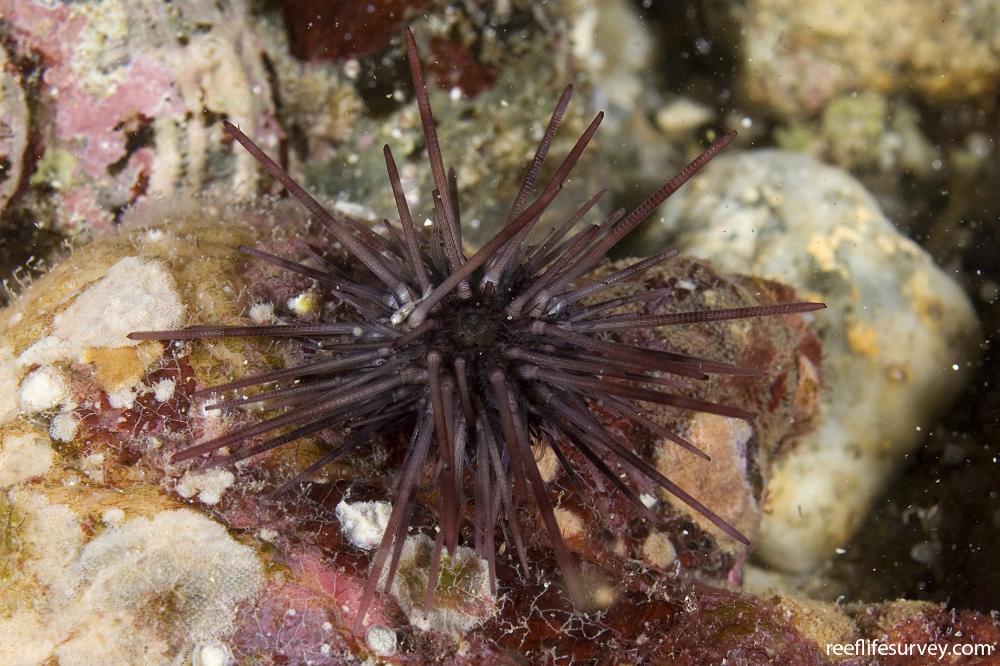Centrostephanus rodgersii
Long-spine urchinSimilar Species
Same Genus
Distribution
Temperate Australasia
Description
When observed alive, the species has an iridescent turquoise sheen on most spine surfaces and a red sheen on individual spines when the observer is looking down the shaft. The spines of the two Centrostephanus species differ from those of other temperate Australian sea urchins (including the most common species, Heliocidaris erythrogramma) because they are hollow rather than having a solid core. It generally occurs in large numbers and can alter community structure on reefs by eliminating kelps and other large macroalgae, causing barren areas of ‘white rock’. The species seems to be spreading southwards along the Tasmanian coast; isolated specimens were first recognised in the northeast of the state only in 1978 but aggregations have now created barren areas in that region, and isolated specimens occur on the south coast.
Information
Max Size: 10 cm
Sea Temperature Range: 13-25.2°C
Depth: 0-35m
Habitat Generalization Index: N/A
Also referred to as the SGI (Species Generalisation Index), this describes the habitat niche breadth of the species. Species with values less than 15 are found in a relatively narrow range of reef habitat types (specialists), while those over 25 may be found on most hard substrates within their range (generalists). Learn more here.
Conservation and Rarity
IUCN Status: Not Evaluated
Occurrence: Common (37.9% of sites)
Occurrence describes how often the species is found on surveys within its distribution. It is calculated as the % of reef sites surveyed by RLS divers across all the ecoregions in which the species has been observed
Abundance: Many (73 per transect)
Abundance is calculated as the average number of individuals recorded per RLS transect, where present.
Edit by: GJ Edgar. 2008. Australian Marine Life. New Holland, Sydney














![Centrostephanus rodgersii [pale form]](https://images.reeflifesurvey.com/1/species_92_66287230baf78.w400.h266.jpg)